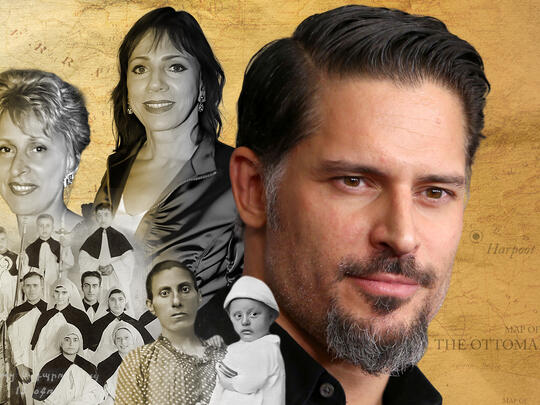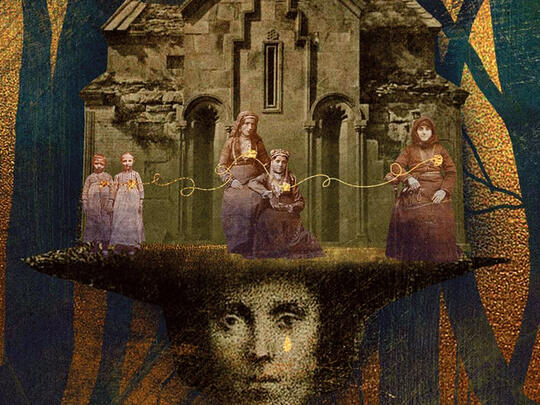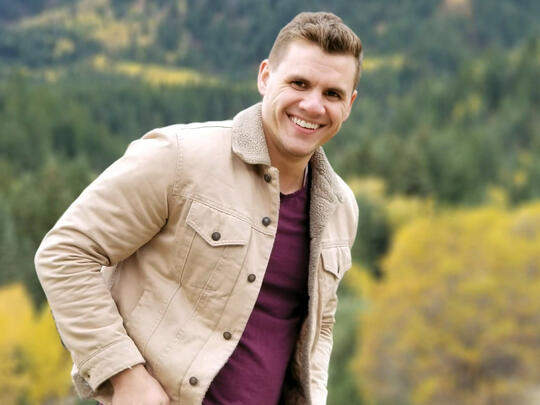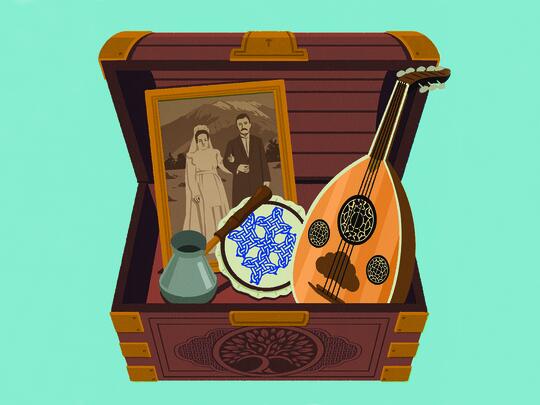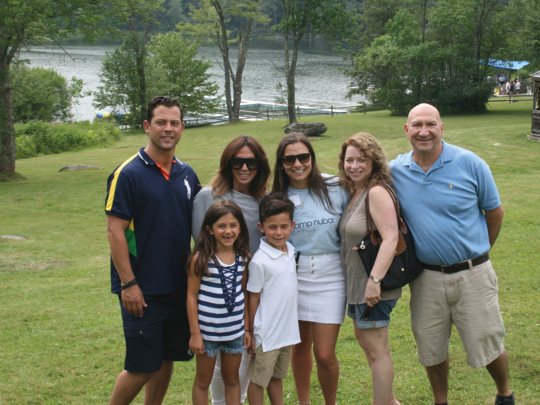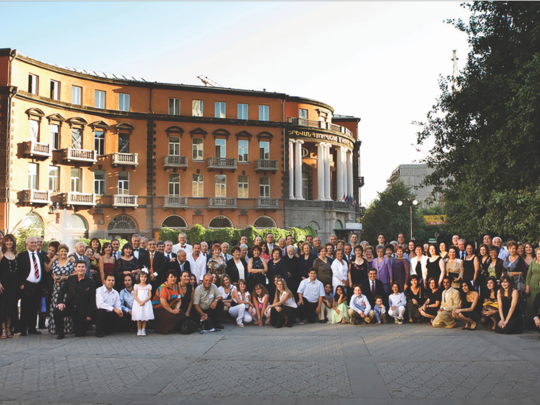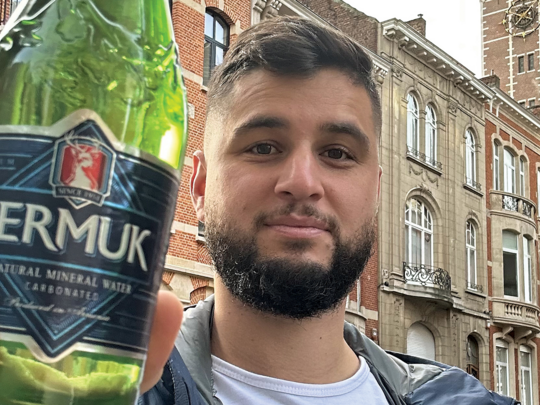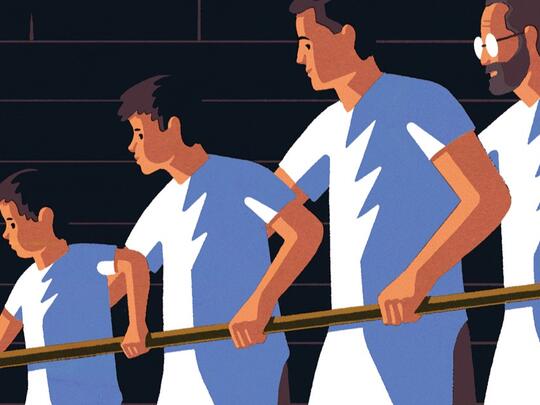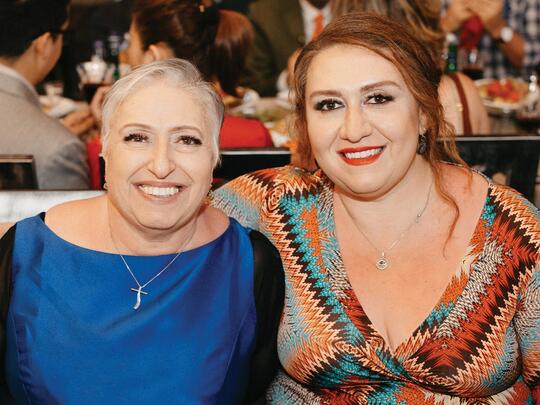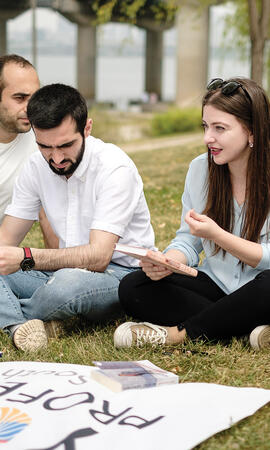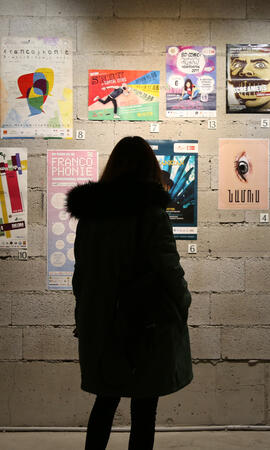In today’s evolving Armenian world, many households with multiple ethnicities and religions living under one roof must decide if the centuries-old Christian religion that is so deeply intertwined with Armenian identity will play a substantial role in their lives. Some, at a certain point, must come to terms with how to maintain and celebrate their faiths and cultures without sacrificing one identity for another.
Here are portraits of two American-born women, one the daughter of an Egyptian and Armenian couple and the other, whose both parents are Armenian, who married an Egyptian. Each has experienced both the challenges and the advantages of expanding their world view and definition of identity in ways from which new generations of hyphenated Armenians can draw wisdom, inspiration, and insight for their own journeys.
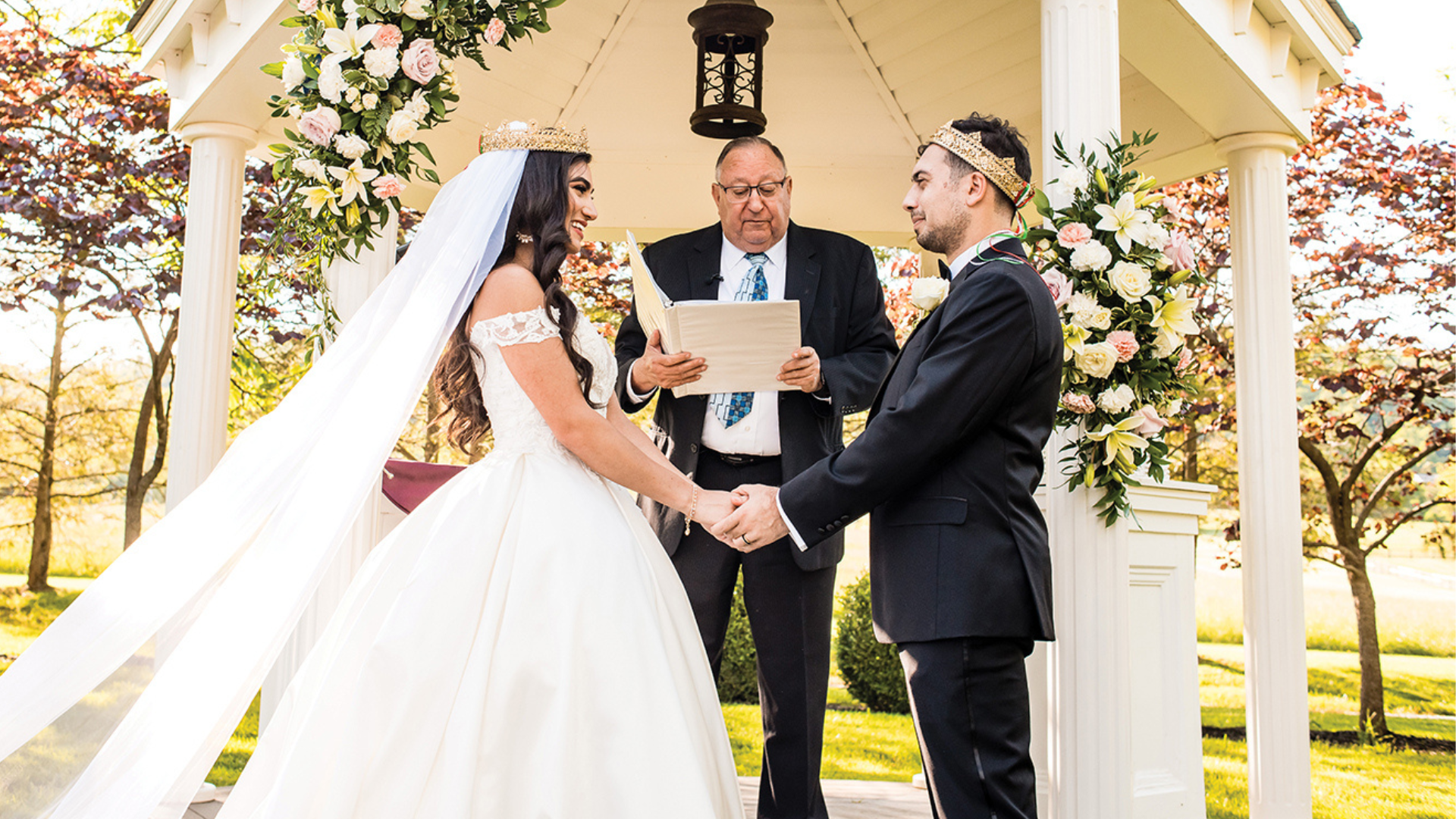
Holy Trinity of Religions
Tahra Lucene Eissa, PhD, is a neuroscientist and musician who grew up in an Egyptian and Armenian household in Chicago attending Catholic school—and is a proud product of balancing strong identities and religions. Her Egypt-born father, now a retired professor, met Tahra’s American-born Armenian mother through university ties and they’ve been happily married for nearly forty years, coexisting in a rich multicultural household with Muslim, Catholic, Armenian Apostolic, and even Protestant and Christian influences and connections.
In a candid interview, Dr. Eissa disclosed that she mainly identified with her Muslim faith from her father’s side, although she attended Catholic schools for most of her childhood. “I would say that up through even most of college I would’ve identified as Muslim—because I was sent to Sunday school at our local mosque following the traditions from my father.”
“How I identify has changed over the years because I was raised within the Egyptian Muslim community, not within the Armenian community in Chicago,” she shared. Dr. Eissa noted that she only began to delve into her Armenian identity in college, at Cornell University, as she was studying engineering. She found herself in a Middle Eastern music ensemble, playing the kanun—an instrument she described as getting harder to play the longer she stuck with it.
“Through the group, I met some of the other Armenian students who tracked me down and said, ‘We hear you’re half Armenian. You should come join us now.’” In graduate school, she took Armenian for a semester and joined the Armenian Club—much to the surprise of her mother. “She was like, ‘I think you know more about the modern Armenian community than I do,’ because she’s been hanging out with Egyptians for thirty-plus years.”
Dr. Eissa considers herself extremely lucky to have grown up with this multicultural identity—although she has had to navigate her fair share of obstacles within her faith. “Apparently one of my shining moments in kindergarten was on Ash Wednesday. I, at least, knew the rule that you’re not supposed to get up [to get ashes] if you’re not Catholic. But I was so angry that everyone got ‘face paint’ except for me—I came home and told my mom I was converting,” she recalls with a smile. “My parents did an amazing job of being supportive and making sure I understood multiple religions.”
She did not end up converting and admitted she doesn’t practice either religion at this point in her life. “There are certain traditions we uphold, there are certain values we keep, but—for example—I’m not fasting for Ramadan.” She adds: “Maybe this is a little irreverent, but I joke that I did enough prayers between Catholic school and Sunday School and I feel like I’ve earned a break.”
Though she was raised with the Abrahamic faiths and is currently not practicing, she still feels pulled to the cultures of both parents. “Religion hasn’t been a huge motivator. I feel like my big tie is music and food—those are critical to my identity,” she shares. “And Egyptian food and Armenian food, the cultures, are so similar even if there is a religious difference. Every night the dinner battle was ‘What is this food called?’ It could all be the exact same food.”
The Egyptian Muslim side of me had directly been impacted because all of a sudden there was animosity towards me because most people don’t see the Armenian side.
That isn’t to say that Dr. Eissa hasn’t grappled with her identity, especially within the realm of neuroscience research. “This is something I contend with, because I am still within academia and when you apply for grants, you still have to identify your demographics. There are certain funds only available to certain underrepresented minorities or BIPOC (Black, Indigenous, and People of Color).”
“If I had to pick an adjective phrase, I guess I would say I’m Middle Eastern American,” she shares, and later backtracks. “I don’t really know what the adjective would be that I would want to describe myself as. So I do have a little internal crisis, and the only thing I know to do is just lay out a fact—my dad is from Egypt and my mom is Armenian.”
Dr. Eissa makes a point to share that her formative years surrounded the September 11 attacks, which ushered in a new era of Islamophobia and xenophobia throughout the nation. “The Egyptian Muslim side of me had directly been impacted because all of a sudden there was animosity towards me because most people don’t see the Armenian side. They see me as Egyptian and Muslim, especially at that age.” She has often had to advocate for herself, even petitioning the government to get her into programs for BIPOC, having to point out the inherent biases around people from the Middle East and with Muslim heritage.
“Anyone who has multiple cultural identities can tell you that these questions are already complicated enough. What do you tell people you are? How are you accepted? Who accepts you?” she asks. Hypersensitive to tokenism, or the act of making a symbolic effort to be inclusive, she hopes for institutions to acknowledge the burden this places on people who already feel marginalized.
Leap of Faith
Ani Jamgochian Tarabishi, a campus minister and AGBU alumna, grew up in a devout Armenian household in New York, singing in the church choir with her mom and attending holiday services with her large Armenian family. Her devotion to her religion was unshakeable—until she fell in love. “Whatever future I imagined for myself just very quickly changed and became exciting in a whole different way,” she shares from her home in Maryland, sitting beside her dog Maple she cares for with her husband Omar.
The pair met serendipitously at a salsa club in Boston and both felt an instant and natural connection. Jamgochian had just wrapped up a year of service in Ecuador and was pursuing a graduate degree in theology at Boston College. Omar was a cost-of-living analyst, traveling internationally every four to six weeks, with Egyptian and Syrian heritage. They bonded over their love of travel, dance, and dedication to social justice.
I cared more and more about this person who brought a lot of joy into my life and I learned new things about my own relationship with God.
“This was all new territory for me,” she shares. “I assumed I would find someone Armenian eventually.” She remembers asking Omar if he was Coptic, or part of the largest Christian body in Egypt, hoping he would say yes—and discovering to her dismay he was Muslim. She admits she surprised herself, thinking this would be a dealbreaker, but wound up following her heart to overcome whatever obstacles would come with this relationship. “I realized this was becoming serious. I cared more and more about this person who brought a lot of joy into my life and I learned new things about my own relationship with God,” she says.
Jamgochian dreaded telling her father about this relationship, knowing he faced painful discrimination for his Armenian identity and faith back in Turkey. And Omar also had to grapple with dating a non-Muslim, knowing his parents would have preferred their son to date an Egyptian or Arab. It took a year of difficult conversations for Jamgochian’s family to come to terms with their relationship. “This was probably when I had one of the toughest relationships with my dad,” she admits. “He gave me a really hard time.”
When Omar asked Jamgochian’s father for her hand in marriage, he was surprised to find they had both been in the same pair of shoes. “He told Omar that when he proposed to my mom, his parents didn’t agree. They wanted him to marry someone who was an Armenian living in Turkey to be able to speak with his parents and be more familiar with the culture,” she says with a trembling voice, still processing this turning point. “They threatened to not come to the wedding. Eventually they did, but my dad described how that made him feel and he said, ‘I would never want to do that to you.’” Omar proposed on the shorelines of Al-Ain, Egypt, honoring his family’s heritage and cementing their new multicultural journey.
The wedding planning proved to be just as stressful for the couple, who decided they would try to find a way to respect both cultures and faiths for this holy sacrament—all during a pandemic. “I talked to a few Armenian priests, I even talked to the bishop and, unfortunately, didn’t really get the support I was looking for. I was hoping to use my theology to convince one of them that this is something that should be celebrated, not something to look down on.” She adds: “I don’t know who decided that interfaith marriages are any less worthy just because the belief systems are a little different. Sometimes we focus a little bit too much on the differences instead of saying, yes, we love and praise God differently.”
“Religion isn’t supposed to distance us, it’s supposed to connect us,” she says. She searched far and wide for an Armenian representative to be at her wedding, tracking down priests across the nation, searching for loopholes, filling out stacks
of paperwork, and contacting every Armenian religious institution. “It seemed the Armenian priests were all bound by red tape and couldn’t offer to actually marry us—but I did appreciate the offer for a blessing, which we didn’t include in our festivities,” she shared.
They found an ex-priest through WeddingWire, who married the happy couple in a lush garden on a beautiful, sunny day. “God was there just as he was there for every other marriage,” Jamgochian explains, adding that she felt at peace with this decision knowing God exists in nature and the church is simply a structure.
Omar and Ani are discovering their own unique groove in married life, finding ways to honor both religions and cultures along the way. Omar has volunteered at Armenian church fundraisers, impressing parishioners with Lebanese and Syrian roots with his fluent Arabic. Ani joins Omar in fasting for Ramadan, which both appreciate as an act of solidarity for those who don’t have food. “He’s challenged me to find God in those moments. It’s been a journey and a healthy challenge, I think,” she concludes. “It’s cool to learn how other people love and praise God and it’s informed me more on how I can incorporate certain things into my own relationship.”


